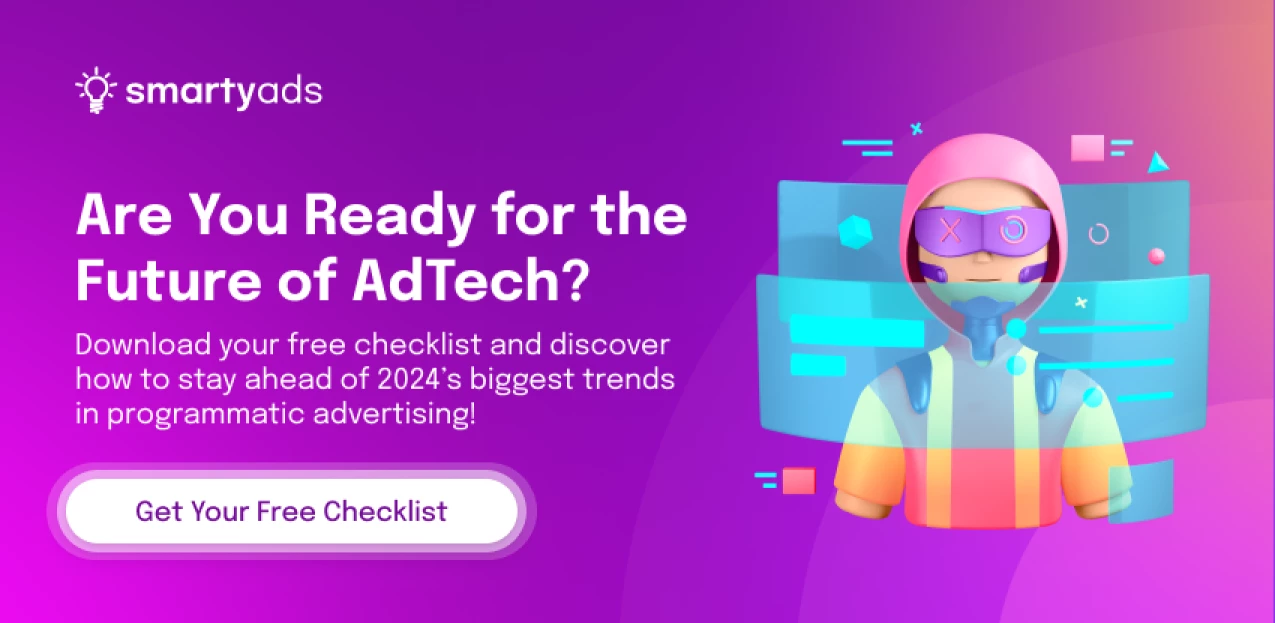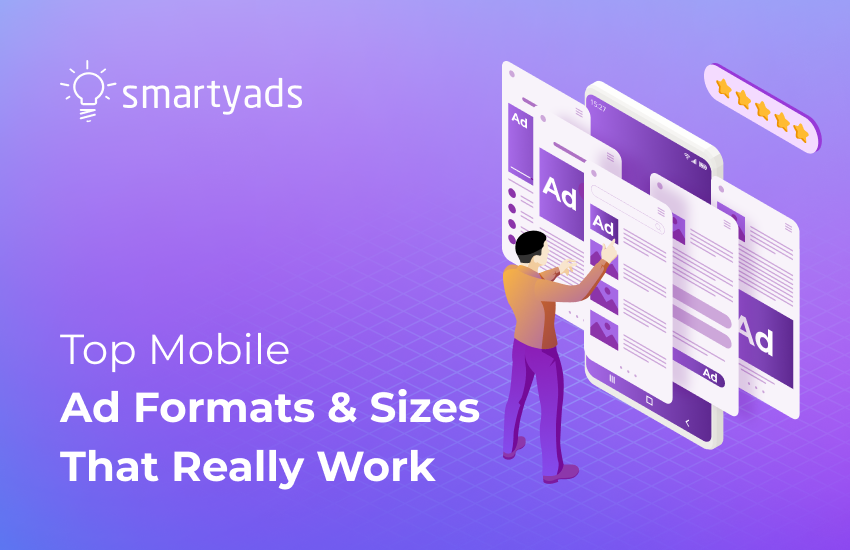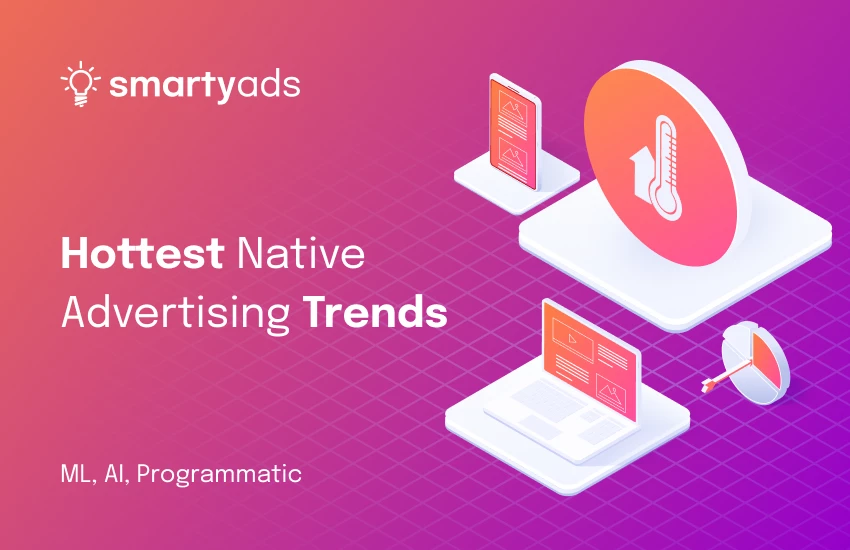AdTech has been rapidly changing and evolving during the last couple of years. With the tightening of privacy regulations, widespread integration of AI across marketing domains, and shifts in attribution and campaign measurement mechanisms, the industry is undergoing a turbulent phase, which is full of new opportunities. Amidst these new movements, businesses are actively searching for new opportunities to adjust their practices to the new normal. From my immersion in the dynamic atmosphere of POSSIBLE, I want to share five outstanding trends that shape the future of advertising technology and make the industry thrive through noise.
#1 Audience-centric ads and shifting dynamics in programmatic
Statista forecasts that programmatic display ad spending in the US will surge to $168 billion next year, emphasizing the pivotal role of programmatic marketing in shaping the future landscape of diverse sectors, notably e-commerce. However, the rules of engagement in this niche are undergoing a profound shift. It is no longer merely a race to secure as much ad space as possible at the lowest cost; programmatic advertising has evolved into a game of exclusivity and uniqueness on the inventory side, coupled with heightened precision in audience targeting.
By focusing on delivering tailored, personalized experiences to precisely defined audience segments, advertisers can maximize the impact of their campaigns and foster deeper connections with consumers.
Meanwhile, publishers must prioritize their loyal audience base. Merely offering inventory to any and every buyer is no longer a viable strategy. Publishers must instead establish a robust framework for assessing potential partners, ensuring alignment across distribution channels, AdTech integrations, and data collaborations. This proactive approach safeguards the integrity of the publisher's image and fosters mutually beneficial partnerships that drive sustainable growth and enhance overall user experience.

#2 The rise of curated deals in AdTech
The prevailing trend in full-stack ad tech stack is the emergence of curated deals, which represent a departure from traditional bulk inventory purchases. These curated deals entail specially selected audience-based inventory packages, similar to bundle offerings in retail.
Just as consumers might purchase a cosmetics set tailored to their preferences and skin type, advertisers now have the opportunity to procure targeted inventory packages tailored to specific audience segments. By bundling together complementary inventory, such as ad placements reaching individuals with similar demographics or interests, advertisers can maximize the effectiveness of their campaigns and enhance overall ROI. This approach enhances ad spend efficiency and facilitates deeper connections with consumers by delivering tailored messaging to receptive audiences.
#3 AI-powered functionality within ad platforms
AI revolutionizes advertising by streamlining audience identification, segmentation, and creative iteration while optimizing campaigns autonomously. As the authors of the POSSIBLE Trends Report point out, “While there’s more to innovation than AI, it’s the technology that’s got us equal parts excited and anxious. So, how do we innovate better? It requires a thoughtful and strategic approach and a human touch.”
On SmartyAds DSP, AI algorithms are at the core of automated campaign optimization. These algorithms define the most optimal bid for an advertiser so that an advertiser can win in real-time bidding auctions. At the same time, the bid sum becomes so optimal that the advertiser does not overpay for it. This feature is called adaptive CPM. Smart algorithms also increase CTR on advertising creatives (a feature called click booster) and allow advertisers to achieve predictable media-buying outcomes thanks to setting individual optimization rules.
In other words, advertisers now prioritize initiatives optimized by AI tools, shaping the future of marketing strategy. Moving forward, this reliance on AI tools is set to become even more evident, reshaping the way advertisers navigate advertising technologies.
To find out how else AI can be used, check out AI in advertising examples.

#4 Influencer marketing going automated
According to Statista, 58% of marketers currently leverage AI technology to pinpoint suitable influencers for their campaigns, with an additional 18.6% utilizing it for sourcing and disseminating content. With the ongoing surge in AI adoption, we expect this trend to grow immensely in the future as well.
Influencer marketing, perceived as a trusted recommendation, significantly impacts consumer behavior by effectively reaching engaged audiences, particularly thanks to the immersive advertising format during streaming. This approach benefits both B2C and B2B brands, enhancing reach, reputation, and sales through collaborations with influencers who share their values. Plus, with automation and AI advancements, influencer marketing is evolving; AI now identifies resonant content, tracks real-time metrics, and optimizes campaigns with precision, poised to elevate the effectiveness and personalization of influencer strategies.

#5 Celebrating transparency with granular direct deals and PMPs
Cutting through the noise, eliminating multiple resellers, and going granular and direct are substantial parts of the media buyers' conversations this year.
SPO (Supply-path optimization) is an important aspect of the movement toward transparency. It shortens the impression’s path from the seller to the buyer while avoiding bidding duplication. For this reason, it has become an indispensable element of media buying for many advertisers.
Private marketplaces are also experiencing a surge in popularity, extending beyond the confines of the local markets and stepping on the global landscape. There is a palpable shift underway, and while open auctions are still very important, private marketplaces are gaining even larger recognition thanks to the more predictable media-trading outcomes and transparency they provide. This transition fosters a secure and transparent environment and often guarantees that advertisements serve their ads on premium media of exceptional quality. As direct deals and PMP are both available on SmartyAds platforms — DSP and SSP — exclusive and beneficial media-trading conditions are available for our advertisers and publishers alike.
The last word
As we look toward the future, the insights from international events this year highlight the significant transformations in AdTech. From curated deals and AI-powered functionalities to granular direct deals and automated influencer marketing, the industry is evolving towards greater personalization, transparency, and efficiency.
We are committed to providing top-notch services to our customers, adopting the latest media trading mechanisms and programmatic optimizations to ensure the best advertising outcomes on our demand-side platform. Immersed in the world of global AdTech events, we look forward to meeting you at the upcoming events to explore these advancements together!
Unlock unparalleled efficiency in your ad campaigns. Sign up for SmartyAds Demand Side Platform demo!

![Unlocking the Future: 5 Must-Know AdTech Trends [Updated 2025]](/storage/articles/20240614_850x550-Unlocking-the-Future-3.webp)


![In-App Advertising: the Complete Guide [Updated 2025]](/storage/uploads/2020/september/in-app-advertising-trends.png)
